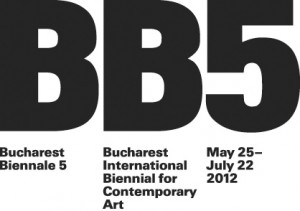PARTICIPANTS:
- Abbas Akhavan (IR/CA)
- Marina Albu (RO)
- Haris Epaminonda (CY/DE)
- Klas Eriksson (SW)
- Ruth Ewan (UK)
- Aurelien Froment (IE/FR)
- Ciprian Homorodean (RO/B)
- Iman Issa (EG/USA)
- Janice Kerbel (CA/UK)
- Jill Magid (USA)
- David Maljkovic (HR)
- Marina Naprushkina (BY/DE)
- Ahmet Öğüt (TR/NL)
- Vesna Pavlović (Serbia)
- Anahita Razmi (DE)
- Wael Shawky (EG/FR)
- Alexandre Singh (FR/USA)
- Mounira Al Solh & Bassam Ramlawi (LB)
- Rinus van der Velde (B)
VENUES:
PAVILION – center for contemporary art and culture
Located in Victoria Square, PAVILION – center for contemporary art and culture is situated on the ground floor of a communist building. The aforementioned space became a banking center in 1993 and it has stayed like this for the last 15 years. The actual building of the block started in the years of the communist regime and it was concluded five years after the fall of communism. The hruschiovi (apartments named after the former communist leader from the ’60s) from the center of Bucharest have witnessed the changes of a Stalinist society into a capitalist society, with strong social and political marks.
It is a work-in-progress independent space, a space for production and research in the fields of the audiovisual, discursive and performative. It is a space of critical thinking, and promotes an artistic perspective implying the social and political involvement of art and of cultural institutions.
PAVILION – center for contemporary art and culture will function as an exhibition venue, as well as the info point of BB5.
Casa Presei Libere / The House of the Free Press
Casa Presei Libere (original name, before 1989, it was Casa Scânteii),a building in northern Bucharest, is a copy of the Lomonosov Moscow State University. Casa Presei Libere held the record for the tallest structure in the city between 1956 and 2007. The building was originally conceived as Scânteia House Complex. The construction of the building took 5 years (1952 – 1957), (between 1949 and 1954, the project leader was Prof. Panaite Mazilu) and was intended to be the headquarters of the official media and especially of the “Scânteia” newspaper that reemerged as the official voice of the Communist Party of Romania. The antenna on this building sustained for a while, since 1956, the Romanian Television transmitter. After 1989, “Casa Scânteii” became known as “Casa Presei Libere” The House of the Free Press. The former Printing House “Casa Scanteii” was also transformed after 1989 into the Autonomous Administration of Printing “CORESI”. In February 1999, the Autonomous Administration of Printing “CORESI” became The National Company of Printing CORESI and is a typography company.
The Institute for Political Research
The Institute of Political Research was created in 1999, 10 years after the revolution, through the transformation of the Centre for Political Research, founded in 1995 as the research core of the Faculty of Political Science of The University of Bucharest. After 10 years from the institutionalization of research activity, the Institute remains one of few platforms of debate and analysis of the Romanian political environment from an academic perspective, through social and economic mediation.
By intervening within the Institute of Political Research, BUCHAREST BIENNALE 5 suggests and inserts new means of investigation, discussion and criticism of the socio-political context.
Alert Studio
Alert studio is an independent artist-run space that acts as a platform for the research and promotion of contemporary artistic production. Taking on the function of a laboratory space, Alert Studio proposes a meeting point between artists, ideas, directions and dialogues from different areas of conceptual and cultural spaces.
BUCHAREST BIENNALE chose this artist-run space as a venue for its strategic position vis-a-vis the Bucharest University of Art, also being a microcosm of a contemporary art scene.
Make a Point
The headquarters of the cultural center Make a Point is inside of old textile factory, “Postăvăria Română” (1925-2008), where, under low light, the weavers would correct any problems found in the finished material. Make a Point is a permanent exhibition space, ideal for a wide variety of cultural events, having a screening room with two screens and a library open to the public.


